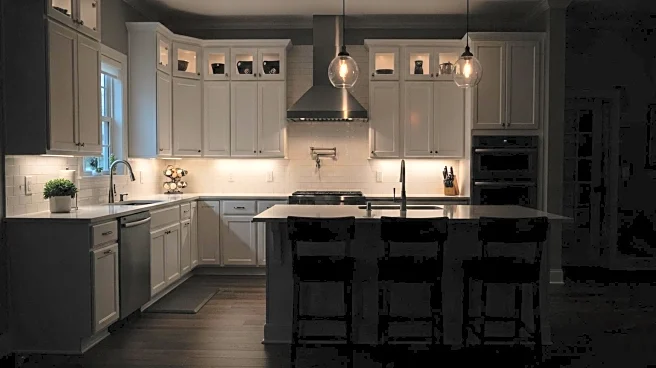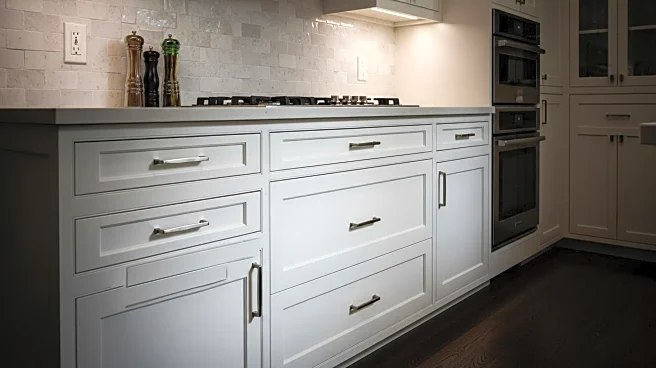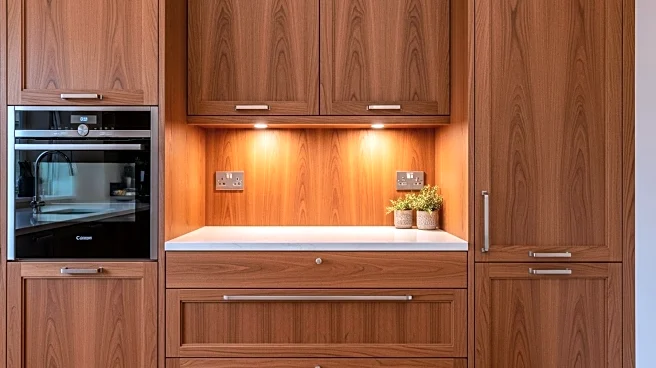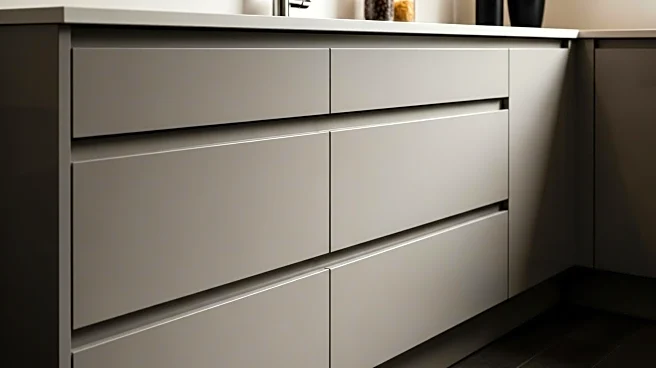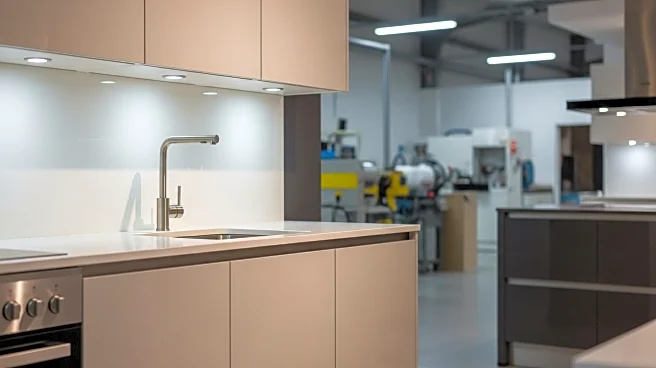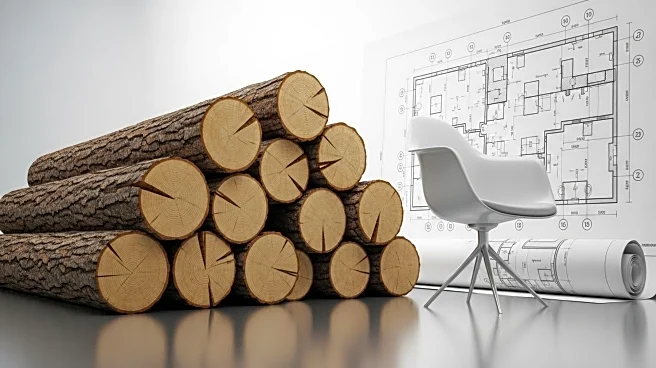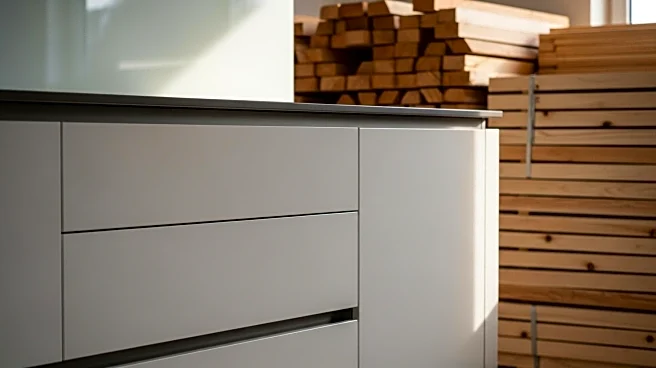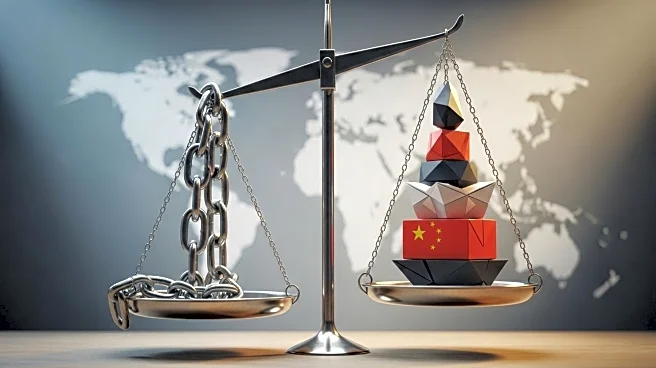What's Happening?
President Trump has enacted new tariffs on imported kitchen cabinets, bathroom vanities, and upholstered wooden furniture, effective immediately. The tariffs start at 25% and will increase to 50% by January, as part of a proclamation citing national security concerns and foreign trade practices. The move aims to boost domestic production and protect U.S. businesses from predatory trade practices. However, small business owners in the home improvement industry express concerns about short-term impacts, such as increased costs for clients and potential delays in renovation projects. Despite high mortgage rates affecting home sales, remodeling activity is expected to remain steady, according to a forecast by Harvard University's Joint Center for Housing Studies.
Why It's Important?
The tariffs could significantly impact the U.S. home improvement industry by increasing costs for imported products, potentially leading to higher prices for consumers. While the tariffs aim to encourage domestic production, many cabinet makers rely on multinational supply chains, making it challenging to shift entirely to U.S.-made materials. The American Kitchen Cabinet Alliance supports the tariffs to counteract cheap imports from countries like Vietnam, Malaysia, and China. However, the increased costs may lead to reduced product variety and affect consumer confidence, as businesses may struggle to absorb the additional expenses without raising prices.
What's Next?
As the tariffs increase, businesses may need to adjust their strategies, potentially focusing on domestic production or absorbing costs to maintain competitive pricing. Importers might scale back orders, prioritizing bestsellers and high-margin products. Companies that do not rely on foreign products may see increased demand, but they face challenges in scaling production quickly. The industry will need to navigate these changes while maintaining consumer interest and confidence in renovation projects.
Beyond the Headlines
The tariffs highlight the complexities of global supply chains in the U.S. home improvement industry. While intended to protect domestic businesses, the tariffs may inadvertently raise costs across the supply chain, affecting both consumers and manufacturers. The situation underscores the need for strategic planning and adaptation in a globalized market, where domestic alternatives may not always be available.
